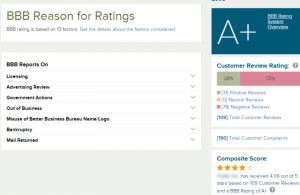Learning & Development (L&D), often called training and development, forms a major part of your talent management strategy and is designed to align group and individual goals with the organization’s overall vision.
Training and Development help employees build their skills and perform well in existing roles. The shift towards a knowledge-based, and digital economy means that a vibrant workforce is more essential than ever. Employee roles are constantly evolving, and it demands employees to learn new skills to remain employable.
“Tell me and I forget, teach me and I may remember, involve me and I learn.”
- Benjamin Franklin
The primary focus of L&D is on upskilling for which learners’ involvement is highly required. Training and Development’s strategic role spans 5 areas – attract & retain talent, develop people capabilities, create a value-based culture, and build an employer brand.
Globally, Organizations spend 357.7 billion dollars on training in 2020, but only 12% of employees apply new skills learned in Training & Development programs to their tasks. So where do companies go wrong,
We are training at the wrong time
Employees are busy with their overwhelming tasks and business commitments. Therefore, attending training sessions is usually low on their priority list. Employees often learn uniform topics, on L&D’s schedule. Also, Inadequate buy-in from leaders, and executive sponsors, makes the Training & Development program roll out inappropriate. As a result, lack of flexibility for employees to complete their training.
We fail to create a learning ecosystem
L&D teams that are still conducting classroom training will certainly hit a roadblock sooner than later. It is important for companies to encourage a broader learning ecosystem of multi-pronged approaches. Organizations must evolve to include a comprehensive blend of training like online courses, on-the-job training, expert sessions, mentoring, etc.
We forgot what we’ve learned
As time goes, the tendency to remember the syllabus decreases. The Forgetting curve was discovered by Hermann Ebbinghaus, a German psychologist, in 1885. Still, it continues to plague today’s L&D team. Based on the training methods (Instructor-led, On-the-job, case studies) that you choose, your employees forgetting curve varies.
Armitage Miller’s paper on “The Magical Number 7 ± 2”, says that an individual can hold only the 7 ± 2 amount of information in his/her short-term memory. Thousands of dollars are spent every year on training and employees keep forgetting the skills. That’s a lot of resources (time, energy, money) wasted each year.
What we should do
The L&D leaders need to revolutionize their methodology by creating a learning strategy that aligns with business goals and enabling the capabilities needed to achieve success. The most effective companies will invest in innovative Training and Development programs and build the workforce talent to master the digital age.
Understanding your employee’s perspectives can go a long way towards increasing productivity and happiness.
– Kathryn Minshew
You must understand the pitfalls of training and overcome them by providing the right content at the right time to your employees. You can leverage the ACADEMIES framework that McKinsey created which covers important aspects of Training and Development functions, from setting to measuring.
You can follow the formula developed by Morgan McCall, “The 70-20-10 rule”. It is used to define the ideal balance for how you should provide corporate L&D.
The 70-20-10 rule
70% of training must take place while on the job
20% must be conducted informally through mentoring programs
10% must be conducted formally through training sessions
And more methodologies like Lean learning, 80/20 rule you can follow.
But try to understand that these are just methods. In order to attain your business goals leveraging the right tool that support your L&D can be of best help. Find out the tool that can help you overcome the forgetting curve, reduce the onboarding & training period, and keep your employees engaged throughout your training cycle and later.
Innovative Solution
Leveraging a Digital Adoption Solution can be of the best help. Here are some key benefits of the Digital Adoption Platform.
- Employee productivity: Digital Adoption Platform supports your L&D program and makes your employee life better. DAP provides in-app training with the help of interactive software walkthroughs. By this way of training, you can improve employee engagement and productivity.
- Processes become automated: The main goal of adopting digitization is to automate and simplify work. This important feature allows the employee to work more efficiently and quickly, helping him to finish assignments faster and reducing the margin of error.
- Schedule flexibility: The organization that digitization brings allows employees to manage their time better. Currently, the most tangible benefit that this process has brought is being able to work remotely or with a hybrid office. This type of modality allows the employee to have more time for themselves, and their professional and personal growth.
- Acquire new skills and knowledge: Having direct contact with a digitalization process makes it impossible not to learn new things. Technological skills are very demanded nowadays for almost any job. Being in direct contact with digital applications will give you invaluable skills that will later be useful in the future. The current job demand is at an all-time high for technology-related jobs.
- Reduce errors: The adoption of digitization is undoubtedly an almost infinite tool. The number of programs and applications that you have available to keep order and solve problems efficiently is quite extensive. This will make employees much more skilled at reducing errors, helping them to achieve a much cleaner result.
- Allows you to be open to change: Finally, digitization is undoubtedly an excellent way to be open to the immense technological changes that will take place in the coming years. An advantage that will help the employee keep up with trends and open his/her mind to new knowledge, helping him/her to grow professionally.
DAPs allow your business to implement new software right away. It can get everyone on board with a new solution in a relatively short period of time. This saves you from having to stall on making changes until you can acquire the time and resources to do companywide training. It also closes the gaps that appear in company systems when some people are trained in a new software, and some aren’t. Leverage the right Digital Adoption Platform to ensure training effectiveness and seamless product adoption.
Business & Finance Articles on Business 2 Community
(38)





